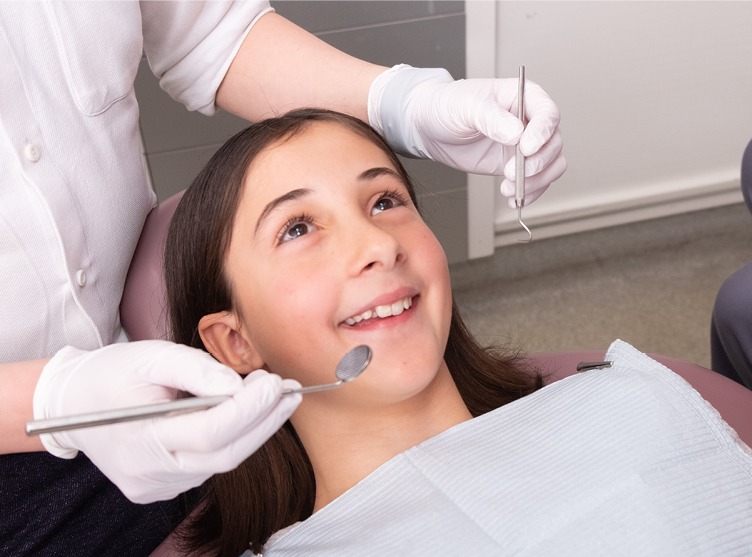Some Ideas on Legacy Orthodontics You Need To Know
Some Ideas on Legacy Orthodontics You Need To Know
Blog Article
Get This Report on Legacy Orthodontics
Table of ContentsHow Legacy Orthodontics can Save You Time, Stress, and Money.The Main Principles Of Legacy Orthodontics How Legacy Orthodontics can Save You Time, Stress, and Money.The Basic Principles Of Legacy Orthodontics The 15-Second Trick For Legacy Orthodontics
At Advanced Orthodontics, we give clients with a holistic treatment experience. Furthermore, we supply adjustable treatment timetables, adaptable settlement options and a fun, pleasurable experience. orthodontist. Telephone call ( 480) 357-4900 today to learn more and routine a visit.An orthodontist is a dentist educated to diagnose, prevent, and deal with teeth and jaw abnormalities. Orthodontists work with individuals of all ages, from youngsters to grownups.
Malocclusion, or misaligned teeth, can cause dental problems, consisting of tooth degeneration, periodontal disease, and tough or painful chewing. Not everyone is birthed with straight teeth. If you have a bad bite or huge areas in between your teeth, you might desire to consult a dental professional concentrating on orthodontic treatment.
Rumored Buzz on Legacy Orthodontics
( Picture Credit Report: DigitalVision/Getty Images) Orthodontists use fixed and removable dental gadgets, like braces, retainers, and bands, to alter the placement of teeth in your mouth. Orthodontic treatment is for dental abnormalities, including: Uneven teethBite issues, like an overbite or an underbiteCrowded teeth or teeth that are too much apartJaw misalignmentThe goal of orthodontic therapy is to enhance your bite.
A healthy and balanced bite ensures you can consume, eat, and speak effectively. While you may assume of orthodontists as generally for kids or teens who need dental braces, they can deal with dental issues at any type of age. Orthodontists go to college, oral school, and orthodontic school. After graduation, they spend 2 or 3 years in an orthodontic residency program.
All orthodontists are dental experts, but not all dentists are orthodontists. Orthodontic residency programs use extensive, concentrated guideline for oral specialists. They concentrate on two locations: Exactly how to effectively and safely relocate teeth Just how to properly direct advancement in the teeth, jaw, and faceOnce an orthodontist has actually finished training, they have the choice to become board accredited.
The Ultimate Guide To Legacy Orthodontics
Misalignment, or malocclusion, is the most usual reason individuals see an orthodontist. It is hereditary and is the outcome of size differences in between the top and lower jaw or in between the jaw and teeth. Malocclusion brings about tooth congestion, a twisted jaw, or irregular bite patterns. Malocclusion is usually treated with: Your orthodontist connects steel, ceramic, or plastic square bonds to your teeth.
If you have just small malocclusion, you may be able to use clear dental braces, called aligners, as opposed to standard dental braces (http://tupalo.com/en/users/8018300). Some individuals require a headgear to help relocate teeth into line with stress from outside the mouth. After dental braces or aligners, you'll need to wear a retainer. A retainer is a customized tool that maintains your teeth in place.
They're frequently used on youngsters. They can produce added area in the mouth without needing to draw teeth. If you have a severe underbite or overbite, you could require orthognathic surgery (additionally called orthodontic surgical procedure) to extend or reduce your jaw. Orthodontists make use of cables, medical screws, or plates to support your jaw bone.
You might need to see an orthodontist if you have: Crowding or not adequate area for all of your teethOverbite, when your upper teeth come over your base teethUnderbite, when your base teeth are as well far forwardSpacing or problems with gapsCrossbite, which is when your top teeth fit behind your bottom teeth when your mouth is closedOpen bite or an upright space in between your front bottom and upper teethMisplaced midline, when the facility of your base and top teeth do not align Remedying an oral malocclusion can: Make biting, chewing, and speaking easierImprove the balance of our face and your total appearanceEase pain from temporomandibular joint conditionsDifferent your teeth and make them much easier to clean, aiding stop dental caries or dental caries It's usually a dentist who first notifications misaligned teeth during a routine exam.
A Biased View of Legacy Orthodontics

During your first orthodontic assessment, you'll likely have: A dental examPhotos taken of your face and smileDental X-raysPanoramic (360 degree) X-rays of your face and headImpressions to develop molds of your teethThese tests will certainly assist your orthodontist recognize just how to wage your treatment. invisalign. An orthodontist is a dental professional who's had training to treat your teeth and jaw
Orthodontists might carry out surgical treatment, exams,X-rays,and even more to help you acquire a more comfy, healthier smile. An orthodontist is focused on your bite, so something like a chipped tooth would be taken care of by a dental professional. Orthodontists are dentists however not all dental experts are orthodontists. Orthodontists are concentrated on your bite, or the method your teeth meshed, and the straightness of your teeth.
Ever wondered just how celebs constantly appear to have flawlessly aligned teeth? Orthodontists are oral professionals that focus on remedying abnormalities in the teeth and jaws.
Legacy Orthodontics for Beginners

While braces are the most generally acknowledged orthodontic therapy, orthodontists have a diverse toolkit at their disposal. The details method chosen relies on the severity of the situation, the individual's age, and individual preferences. These reliable braces make use of a system of braces bonded to the teeth and linked by cables.
Clear aligners, like Invisalign, are a popular option for see post people looking for a much more very discreet therapy option. These detachable trays are custom-made to considerably change the teeth's setting. Headgear may be used along with dental braces or aligners to apply added targeted forces, especially for dealing with jaw inconsistencies. In situations of slim jaws, palatal expanders can be made use of to develop room for proper tooth alignment.
Report this page